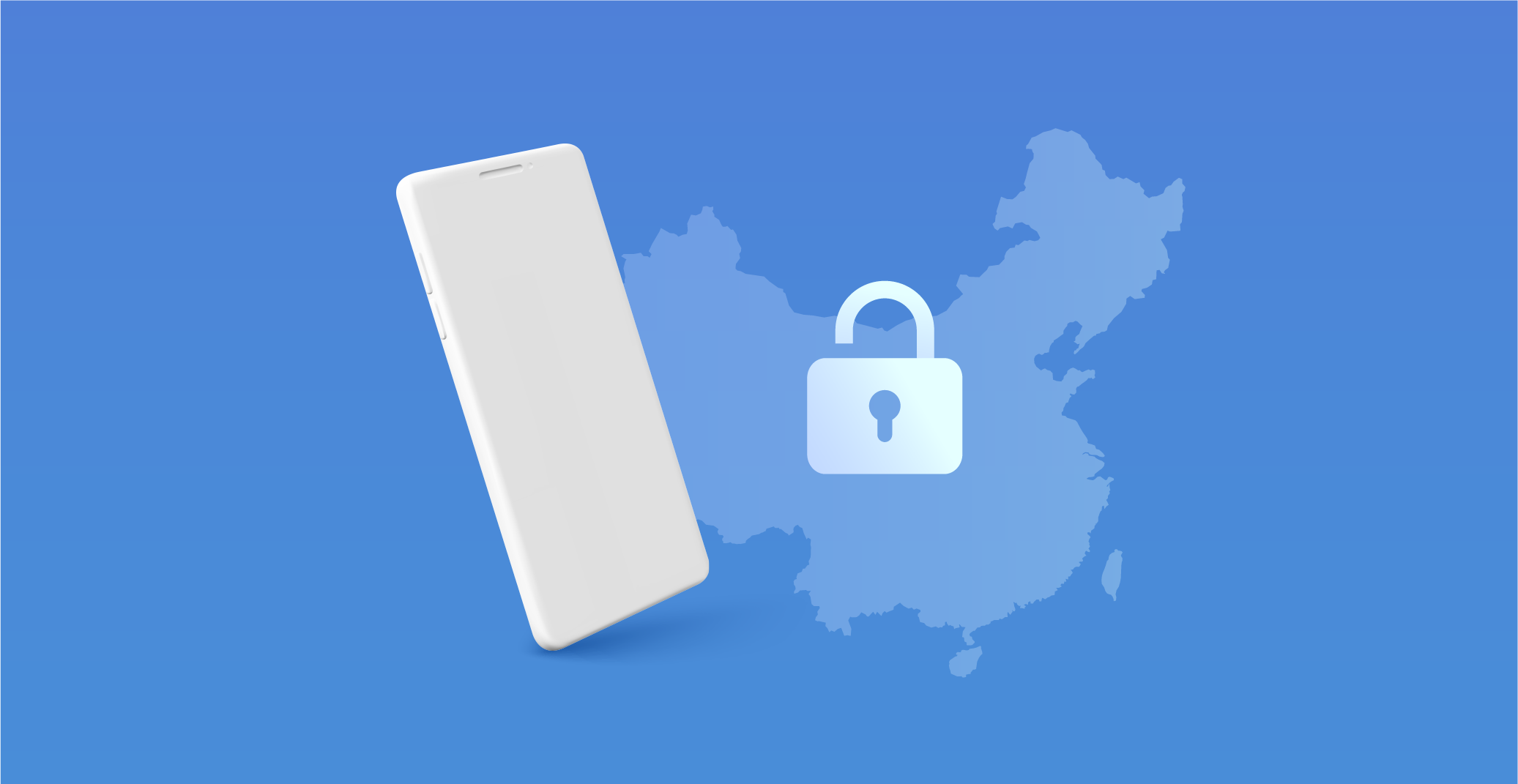
Over the last several years, Chinese smartphones have gained a very lousy reputation when it comes to privacy, owing to a variety of factors including a lack of customer trust and the fact that global political events have not been particularly kind to China. China's worldwide image improved significantly in the mid-2010s, owing mostly to China's entry into the smartphone market and developments in 4G and 5G technology.
The market for smartphones is now one of the most rapidly developing areas of the technology sector worldwide. The number of mobile devices sold around the globe has skyrocketed from 100 million in 2007 to over 1.5 billion, which saw the advent of the smartphone revolution. Because smartphones are the most frequent way of connecting to the internet, companies that operate in this sector are vital to the development of the technology sector.
We saw the original Apple iPhone debut 14 years ago in 2007, which surely signaled the beginning of a new era of information. We've seen huge players like Samsung join the market throughout the years, and more lately, Chinese competitors like Huawei and Xiaomi have been eating up worldwide market share with their low-cost handsets. Moreover, Oppo and Vivo, which have a tiny but consistent market share and are even gaining popularity in the United States, should not be overlooked.
Apple has never been as successful in China as it is elsewhere, owing to the country's preference for domestic produce and local brand loyalty. Having said that, Apple has always been in demand there. Outside of China, however, Apple has controlled the smartphone industry for a long time, and the whole globe often lies in anticipation of their next news conference and the release of their next iPhone. For many years, market supremacy was exchanged between Apple and Samsung, with Samsung ruling the majority of the time.
However, the worldwide smartphone market has shifted recently. With such strong competition (Samsung, Xiaomi, Huawei) on the horizon, as well as Apple's extremely expensive pricing for its current products, Chinese competitors have adapted and established a stable market hold for the foreseeable future. Chinese smartphone manufacturers are now a serious rival for the established giants, offering the similar minimalist design approaches that Apple is renowned for, as well as entirely redesigning their marketing efforts. Finally, the US and EU markets are the most significant target markets for Chinese smartphones.
However, there seem to be severe privacy concerns that are impeding Chinese smartphones and their image.
What is the issue with Chinese smartphones?
There are a number of Chinese companies that are now producing smartphones on the market, with Huawei and Xiaomi being the most well-known and popular brands in countries other than China. The majority of customers may not be acquainted with some of the other "cheaper" businesses, such as Honor and Realme. There are a great number of other Chinese smartphone manufacturers, perhaps too many to list here.
What difference does it make whether you want to buy a Chinese smartphone or if you already own one, given the amount of political tension that exists between the United States and China? Unhappily, Chinese smartphones have been afflicted with a number of privacy and security issues, which may be broken down into the following categories:
• Spyware already installed
• Vulnerabilities when it comes to malware
• Data theft
• "Backdoors" in Hardware
• Encryption-related flaws
Moreover, there are extra hazards involved with downloading particularly popular Chinese social networking applications, in addition to the malware that comes pre-installed on Chinese devices. Some examples of these risks include:
• TikTok
Conclusions for your smartphone's overall security
Let's not forget, now that we've covered the reasons why there is such a lot of bad buzz about Chinese smartphones and the privacy issues they pose, that a large part of this has to do with the political tensions that exist between China and the United States. Allegations of espionage, hacking, and danger to data have been made an extremely high number of times. In addition to that, there is an additional fact that is more significant for the typical user. Android, which has a far bigger user population and is thus more vulnerable to assaults because of the size of its user base, is the foundation upon which Chinese phones are built.
Let us highlight one thing: certainly, it is difficult to declare that these technologies are safe; but, the question is: what really is safe in this day and age? Should this make you, the regular person, think twice about purchasing a smartphone made in China? It is difficult to say what constitutes "security" at this time, and whether or not governments will try to gain access to your phone depends heavily on who you are and how sensitive your data is.
However, if you are concerned about your privacy, there are a few steps you should take for your own protection and peace of mind, regardless of the device you are using or the nation in which it was manufactured; the following is a list of these steps, which you may read below:
• Always utilize a reputable virtual private network (VPN)
• Consider the possibility that iOS is more secure than Android in general
• Make sure your phone is protected by a strong password
• Ensure that multi-factor authentication is used at all times
• If at all possible, avoid sharing critical information online
• Keep your smartphone's software up to date at all times
• Never use suspicious applications or access third-party app marketplaces
How secure are Chinese smartphones?
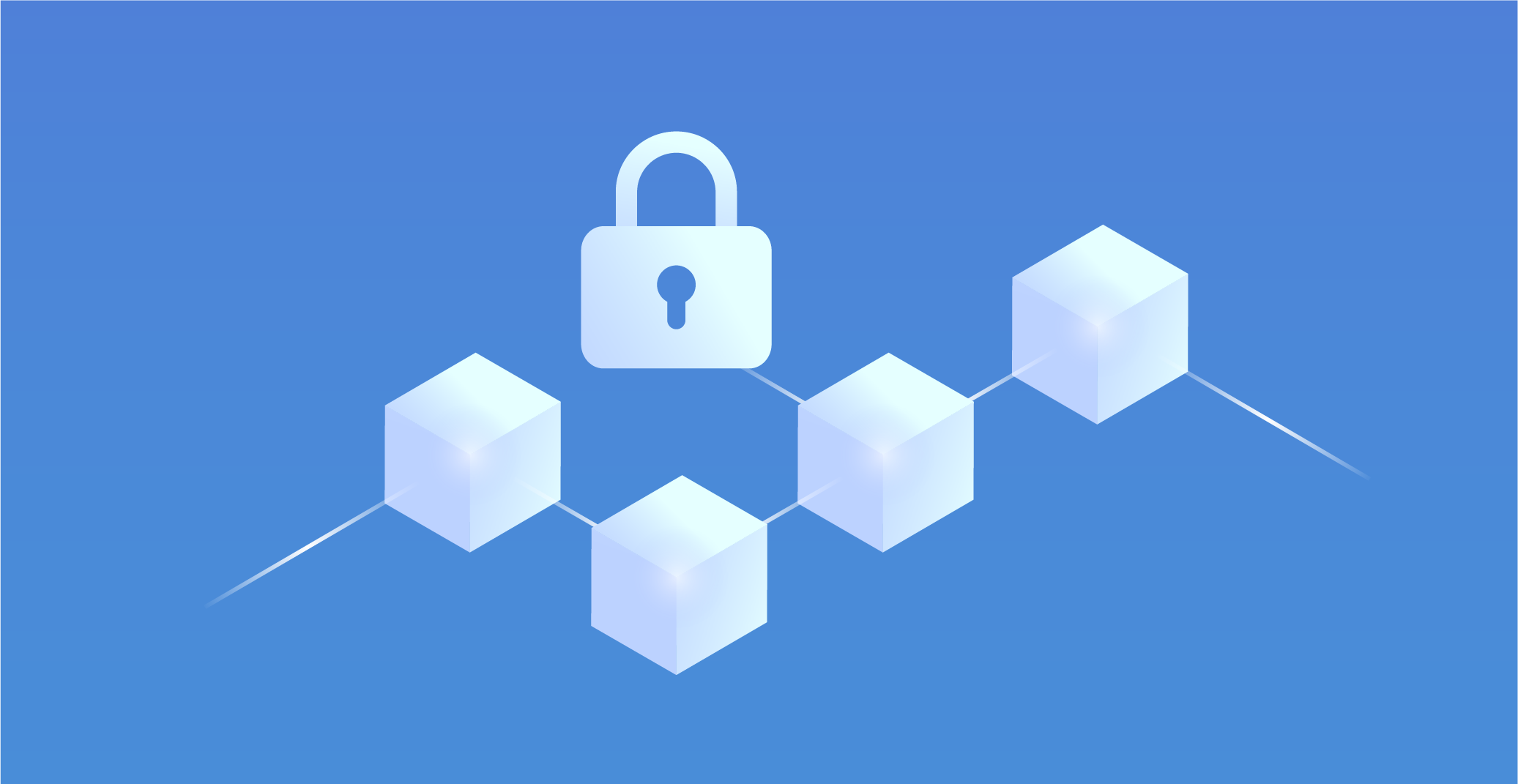
Most of web3's security is based on the blockchain’s unique ability to be resistant to human intervention. However, because of the associated feature of finality, where transactions are generally irreversible, these software-driven networks are an attractive target for attackers. Likewise, as the value of blockchains — the distributed computer networks that underpin Web3 — grows, they become increasingly appealing.
While web3 differs from previous web iterations, we have seen similarities with prior software security patterns. In many cases, the most serious issues stay unchanged. Advocates, whether they are builders, security teams, or everyday crypto users, can better secure themselves, their projects, and their wallets by learning these areas. Based on people's experiences, we've compiled a list of recurring themes and predictions.
Chase the money
Typically, attackers seek to maximise their return on investment. Because the potential return is bigger, they may devote more time and effort to attacking protocols with a higher "total value locked," or TVL for short.
Hacking groups with the highest amounts of resources are more likely to target high-value systems. New, more valuable exploits are also more likely to target these important targets.
Low-cost assaults, such as phishing, will never go away, and we expect them to become more prevalent in the near future.
Fixing a hole
As developers learn from tried-and-true assaults, they can improve web3 software to the point where it is "safe by default." This frequently entails tightening up application programming interfaces (APIs) to make it more difficult for people to add vulnerabilities by mistake.
Because security is always a work in progress, and nothing is ever immune to hacking, defenders and developers may make attacks more expensive by removing most of the low-hanging fruit for attackers.
The success of the following attacks may be considerably reduced as security policies and tools improve: control attacks, price oracle manipulation, and re-entry problems.
Platforms that cannot provide "perfect" security will have to employ exploit mitigation methods to decrease the possibility of losses. This can deter attackers by lowering the "benefit" or possible benefit component of their cost-benefit analysis.
Attack classification
Attacks on various systems can be categorised based on their similarities. The sophistication of the attack, the extent to which attacks can be automated, and the preventive measures available to fight against them are all defining aspects.
The following are some of the types of assaults that users have observed in the most recent hacks. We've also included our thoughts on the current threat landscape and what we anticipate from web3 security in the future.
Top predators in APT Operations
Advanced attackers, often known as advanced persistent threats (APTs), are a security nightmare. Their motivations and talents vary significantly, but they are usually well-endowed and, as the term suggests, persistent; unfortunately, they are likely to constantly be present. APTs carry out a wide range of operations, but these threat actors are the most likely to actively assault a company's network layer to achieve their objectives.
We know that certain advanced groups are actively pursuing web3 initiatives, and assume that there are others who have yet to be discovered. The people behind the most serious APTs typically reside in countries with no extradition accords with the US and EU, making it harder to punish them for their actions. Lazarus Group, a North Korean gang responsible for the greatest сryptocurrency heist on record, is one of the most well-known APT attackers.
We anticipate that APTs will continue to operate as long as they can monetize their activities or achieve various political objectives.
Social engineers engage in customer phishing
Phishing is a well-known and prevalent issue. Phishers attempt to trick their victims into falling into a trap by delivering bait messages over numerous channels such as instant messengers, email, Twitter, Telegram, Discord, and compromised websites. If you look through your spam folder, you're sure to find hundreds of efforts to deceive you into disclosing personal information or stealing money.
Phishing efforts are targeting web3 users now that it allows people to directly exchange assets like tokens or NFTs quickly. These assaults are the simplest way for persons with little to no technical knowledge to profit from cryptocurrency theft. They remain, however, a viable technique for organised teams with serious goals or advanced groups looking to undertake large-scale wallet-emptying attacks, such as website hijacking.
We anticipate a rise in these attacks because phishing is inexpensive and phishers seek to adapt to and circumvent the most recent security features. Increased education and awareness, better filtering, clearer warning banners, and tighter wallet restrictions can all help to improve user protection.
Vulnerabilities in the supply chain are the weakest links
Third-party software libraries expose a significant surface for attack. This has long been a security concern for pre-Web3 systems, as evidenced by the log4j hack that compromised a popular web server’s software in December. Attackers will search the Internet for known vulnerabilities in order to locate unpatched flaws to attack.
Although the imported code was not built by your engineering team, it must be maintained. Teams must keep an eye out for vulnerabilities in their software components, ensuring that updates are deployed, while staying up to speed on the dynamics and progress of the projects on which they rely. The real and immediate cost of exploiting web3 software vulnerabilities makes communicating these issues to library users challenging. The decision on how and where the teams communicate this in a way that does not mistakenly jeopardise users' monies is still pending.
We expect Supply Chain Vulnerabilities to rise as the dependency and complexity of software systems grow. Random hacking assaults are expected to rise as well until solid, standardised ways for exposing web 3 security flaws are created.
Web3 Security: Types of attack
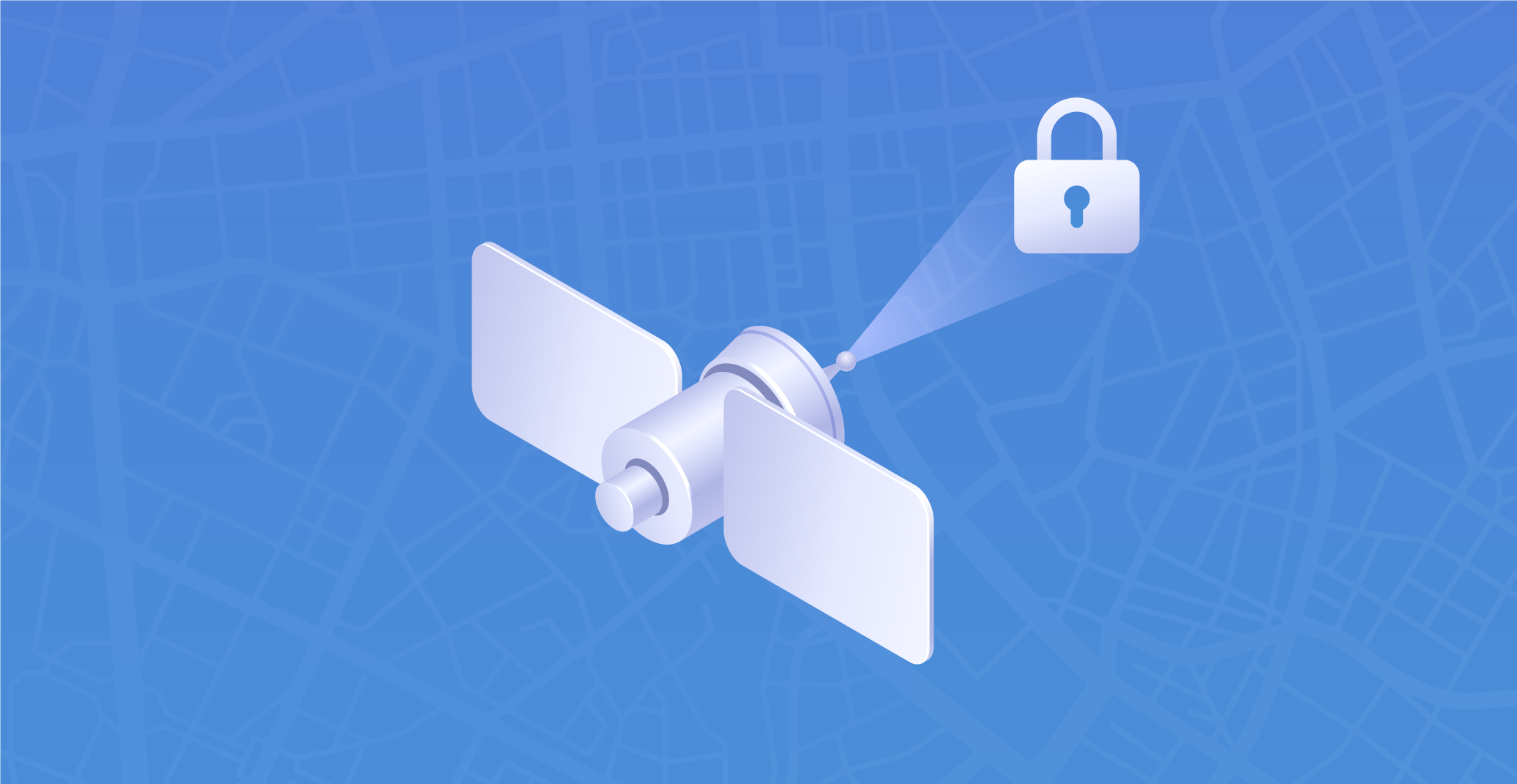
GPS devices have been made accessible to a wider market as technology advances, and the degree to which our daily lives rely on precise location and timing has also increased. For tourists to navigate effectively from one location to another, the use of a global positioning system (GPS) has become standard.
Businesses and people now have access to possibilities that were previously unavailable because of GPS. On the other hand, this is not always a positive thing since spoofing might make GPS systems susceptible to cyber assaults. Let's find out the main things about spoofing and how to keep your GPS safe.
How does GPS spoofing work and what is it?
GPS signal spoofing occurs when an attacker imitates the original GPS signal by substituting a phoney GPS satellite signal. The "false" signal indicates a change in location, navigation, or time to the recipient.
Have you ever driven to the local mall, but your GPS said that you were at the library? If your GPS has ever told you that you are at an incorrect location, you have likely been the victim of GPS signal spoofing.
How does it work?
To understand how spoofing works, we must first understand how global navigation satellite systems operate. The satellites transmit communication signals to our devices while orbiting the Earth in a medium earth orbit at a height of approximately 20,400 kilometres.
Satellite signals are sometimes rather weak as they must travel such a long distance to reach your device. GPS communications are not encrypted and may be read. As a result, they are an apparent target for anybody wishing to record, transmit, or modify them.
The terrestrial radio transmitter imitates GPS signals with a signal strength that exceeds what the genuine system can handle in a GPS spoofing attack. This replaces authentic GPS signals with fake ones.
But how can a GPS signal be tampered with? This usually includes the utilisation of a GPS spoofing device or spoofing technology, such as an app. They change GPS signals; to spoof, the transmitter must be near the GPS-enabled device. It then imitates the signal to fool the GPS receiver into reporting a different location.
Spoofing technology was formerly difficult to get a hold of. It was once a costly technology only accessible to the military. Now, a transmitter of this kind is already widely accessible. GPS jammers can be found online for as little as 100 USD. As a result, nearly anybody can impersonate GPS signals.
Who falsifies GPS signals and why?
Any satellite navigation-based technique is susceptible to spoofing. The technique of spoofing is practically free, readily accessible, and immensely popular. Virtually everyone uses spoofing, from privacy advocates to Uber drivers, and teenagers.
Since GPS is essentially accessible to everyone, its security has become a big problem. There are several reasons to alter the GPS signal. These consist of:
• Accessibility to country characteristics
Some individuals use spoofing to alter their device's receivers in order to get access to country-restricted material, services, games, applications, and even television programs and movies.
For instance, certain programs on Hulu, Netflix, and other streaming services are only accessible in particular regions. Since it is impossible to fly to another country in order to view programs, spoofing allows you to modify your true location and access country-restricted content. Many individuals utilise VPNs for this reason.
• For military purposes
Initial plans were for the military to use GPS equipment. Ironically, the military was the first to falsify GPS. The majority of armed forces may utilise GPS to simulate their position and conceal their activity. For tactical navigation, guided weaponry, and command and control operations, the military may also perform GPS spoofing assaults.
• To avoid motion tracking and conceal locations
Numerous individuals use spoofing to generate a false GPS position, preventing applications from precisely tracking their activities. Most individuals use this to keep some sense of control over their data by instructing their applications to show an incorrect location.
Additionally, teenagers use spoofing to conceal their whereabouts from their parents. This is how easy spoofing has become.
• To conceal unlawful conduct
Criminals may also employ spoofing to conceal fraudulent acts such as kidnappings, car thefts, and evidence tampering, or to induce public panic by causing accidents by interfering with automobiles. They may even fake a GPS to send victims to online or physical danger zones.
GPS safety suggestions
Here is some advice on how to prevent GPS spoofing attacks:
• Install phone antennae
Install bogus antennae in a visible location, away from the genuine ones. This guarantees that spoofing attacks do not disrupt real transmissions. A reasonable distance should be at least 300 metres.
• Carefully consider where to place your antenna
The antenna's optimum placement should offer an unobstructed view of the sky. Signals from the ground or neighbouring public areas are blocked by buildings and other objects.
Install antennas in areas where they are not visible to the general public, or use barriers such as plastic fencing to hide their position while not interfering with GPS signals.
• Follow internet hygiene guidelines
Individuals and companies should change and update passwords regularly, install security patches and updates, utilise firewalls and virus protection, and consider adopting multi-factor authentication and other cyber defences to avoid spoofing attacks.
• Turn off any GPS-enabled gadgets that are not in use
Individuals and businesses that utilise GPS-enabled devices should keep them turned off when not in use. This will keep spoofing attempts at bay.
Install two or more antennae at opposite ends of a building or ship to identify faults and switch to backup navigation systems instantly.
GPS monitoring and location sharing offer significant privacy risks. GPS spoofing may be very dangerous for people, corporations, and governments. Regardless, it enables users to safeguard themselves against security risks and dangers. So, a balance must be achieved.
How secure is GPS?
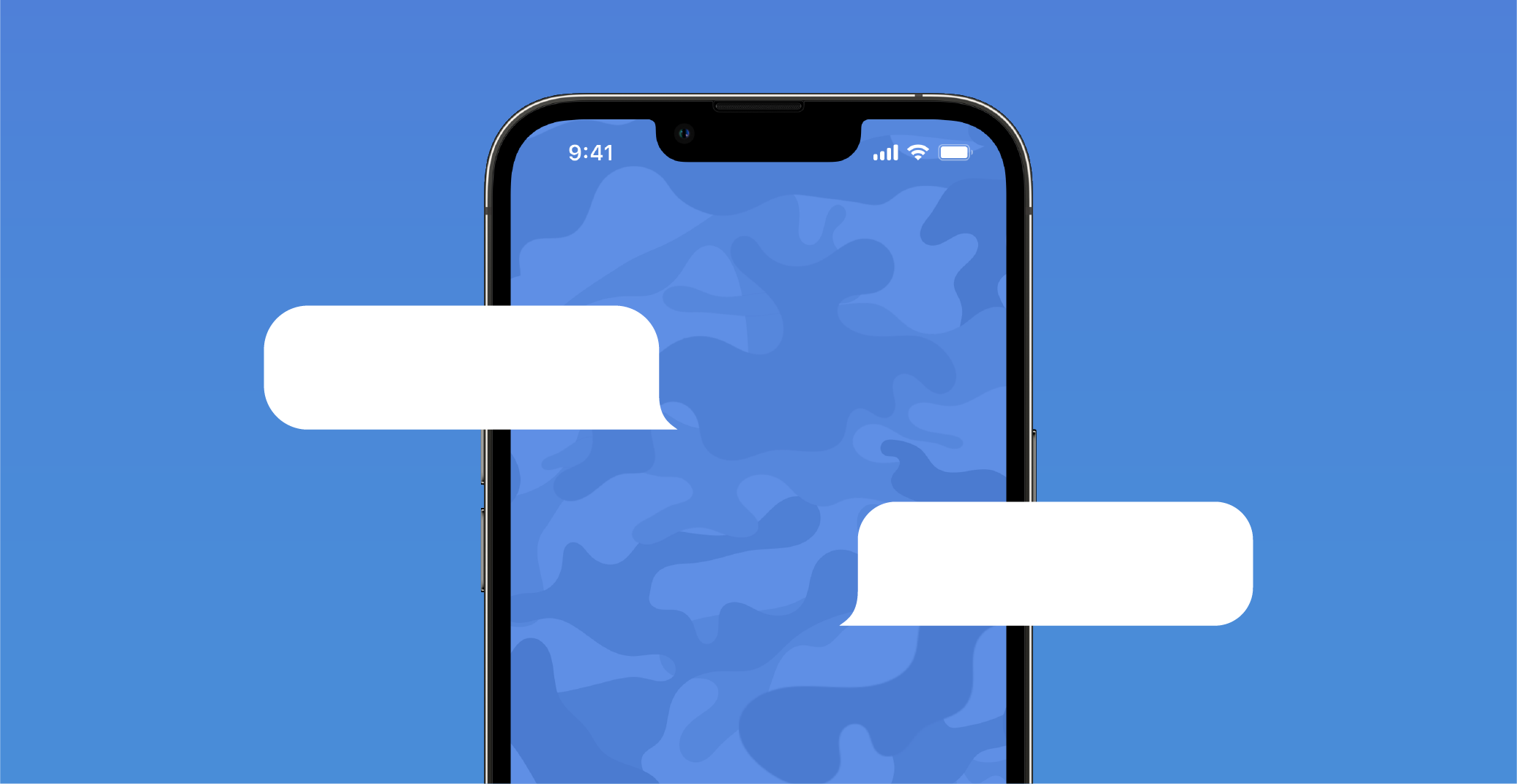
Professionally coordinated operational communications allow warfare to be done while preventing escalation and/or emergency scenarios.
In order to ensure the highest possible security of soldier communications on missions, to prevent espionage, and perhaps even to win the war, it is necessary to use a large number of military information and communication technologies. They should not only protect and provide communications for operational activities but also enable an exchange between military personnel at the "internal" and "secret" communication levels.
Nowadays, the use of mobile devices for communication has become so commonplace that it has even spread to the industries of military and defence. This scenario uses programs for communication, which are often called instant messengers.
The armies of different countries are looking for secure ways to exchange messages. Some are turning to already available commercial solutions, while others are developing their messengers with the help of the open-source community. Let's take a look at what messengers are used in the armies of the world, and what are their features, advantages, and disadvantages.
USA
The US military leadership suggested the use of encrypted messengers Signal and Wickr in combat zones, including in the Middle East. Both were created by the open community and are available for free download.
Open Whisper Systems created Signal, which uses its proprietary Signal System encryption protocol, which is used by other messengers. Wickr has created a military-specific RAM version. End-to-end encryption is provided for chat messaging, audio and video conversations, secure screen sharing, and massive file transmission and storage.
The usage of Signal and Wickr, on the other hand, violates the US Freedom of Information Act, which states that email and text messages received in official government activities are public and must be made accessible upon request. At the same time, both messengers offer the ability to delete messages, which are not saved on senders' or receivers' devices or the company's servers.
France
European governments seeking digital sovereignty are developing messengers such as Matrix using decentralised messaging protocols. The adoption of such a protocol enables you to store data in the application developer's infrastructure. This software's messenger contains open source code, solid end-to-end encryption, and is decentralised. The Matrix-based system was developed by the French Armed Forces. In 2019, they developed the Tchap messenger to replace Telegram, which was previously used by local government departments for communication.
Germany
The German armed services also utilise the Matrix-based BwChat messenger for military communications. The messenger, developed with the help of the nation's Armed Forces' Cyber Innovation Center and Stashcat, provides a secure communication route not only while deployed in the country, but also when deployed overseas. Because of end-to-end encryption and mobile application management, it may be accessed from both professional and personal devices (MAM). In a safe communication environment that conforms with data security and GDPR, BwChat blends traditional chat features with cloud storage.
Each user gets their own file storage area and each conversation has its own storage space. User data is encrypted and handled in line with German data protection legislation in a server centre in Hannover.
The program allows for secure document sharing, an infinite number of conversation participants and the surveillance and organisation of movements using the "Share GPS Location" function. It is not dependent on the user's contacts list.
Switzerland
Except for the native messenger Threema, the Swiss Army prohibited all chat applications in 2022. The military can no longer use Signal, Telegram, or WhatsApp.
Because Threema does not require users to enter a phone number or email address when enrolling, no identity may be determined using publicly available information. At the same time, the messenger allows you to identify persons in your contact list by their QR codes.
Israel
In the year 2020, the IDF developed a messenger that was functionally equivalent to WhatsApp. It looks and operates just like WhatsApp, but it has additional privacy protections built in for sending extremely sensitive operational data, such as while conducting reconnaissance.
India
The Indian Army introduced its SAI texting app in 2021. It is comparable to commercial competitors WhatsApp, Telegram, and Signal in that it enables end-to-end encryption for voice, text messaging, and video conversations.
The Indian app offers enhanced security protections since all data is handled on local servers.
China
There is no open source information available on the Chinese military's usage of instant messengers. Furthermore, most major instant messengers and social networks, including Facebook, Instagram, Twitter, Whatsapp, Telegram, Viber, and even ICQ, are restricted in the nation. Local military troops are most likely using WeChat, the country's most popular and government-controlled messenger.
The safety and security of data are extremely important, particularly when it comes to the official communications of the military and in the institutions of the defence sector. Every officer in the armed forces is responsible for ensuring the safety and well-being of their colleagues. The success rate of successfully protecting secret and personal information is directly proportional to the level of security, encryption, and compartmentalization of the connection.
The secrets of military communication

Quantum computers, which are very particular kinds of computers, are capable of solving problems in a very short amount of time, even those that would take a supercomputer a very long time to solve. It is true that doing these tasks is still a long way from being a reality, and quantum systems have many limitations. But, as we all know, progress is a never-ending process, and it is possible that in the not-too-distant future, this technology will rule the planet. Let's have a conversation about how this cutting-edge technology may impact our security.
Data encryption is the key to online security
Encryption is essential to the protection of data on computers and other Internets. Encrypting data entails utilizing a secret rule and a collection of characters, known as ‘the key’, to turn it into a meaningless jumble. To comprehend what the sender was trying to communicate, one will have to decode the ‘porridge’ using the key.
One of the most basic types of encryption is when each letter is replaced by a number (say, A - 1, B - 2, and so on). The word ‘breadfruit’ will appear like ‘2 1 15 2 1 2’ in this example, and the key will be the alphabet, where each letter corresponds to a number. Of course, more sophisticated rules are utilized, but the idea of the operation is roughly the same.
When there is only one key for all interlocutors, as in our case, such ciphers are referred to as symmetric. Before you may use a symmetric cipher, all interlocutors must acquire this key in order to encrypt and decode their own communications. Furthermore, it must be transmitted in an unencrypted format (after all, there is nothing to encrypt with yet). If you have to send the key over the Internet, attackers can intercept it and successfully spy on everything you've secured with it. This is not very practical.
As a result, there are encryption methods that employ two keys: private for decryption and public for message encryption (these keys are also called private and public). Both are the recipient's creations. He does not give the secret key to anyone, therefore he will not be intercepted.
The second, the public key, is intended to allow anybody to encrypt data with it, but it can only be decrypted with the accompanying private key. As a consequence, it is not frightening to send information in an unencrypted form — it poses no harm. This method of encryption is known as asymmetric.
Both the ‘lock’ and the ‘key’ (that is, public and private keys) in current encryption systems are typically huge integers, and the algorithms themselves are constructed on sophisticated mathematical processes using these numbers. Furthermore, operations must be designed in such a way that ‘turning them back’ is exceedingly difficult. As a result, having the public key will not assist someone attempting to break the cipher.
Quantum cipher cracking
What this means is that anything that is encrypted with a public key can only be decoded by its private ‘partner’, and no one else. This indicates that the private key is being investigated by potential adversaries. Because it is not sent to any location, as we have stated previously, it is not feasible to intercept it. However, in principle, one may get it from the general populace.
However, cryptographic methods are purposely intended to make it difficult to solve the challenge of acquiring a private key from a public key in a reasonable length of time. This is done by preventing the reverse engineering of public keys into private ones.
Quantum computers become useful at this point in the discussion. The simple truth is that, as a result of their design, they are capable of solving such problems significantly faster than conventional computers.
When a quantum computer is utilized, the unreasonably long amount of time needed to decipher a cipher can be reduced to a more manageable amount of time. And because of this, the very idea of utilizing a cipher that is susceptible to being broken by a quantum computer may be rendered moot in some theoretical sense.
The advent of quantum computers is imminent, and when they do arise, the world will be forever altered. Their introduction might completely change the way physics and medicine are practiced, not to mention the way that information is protected. So, how should we get ready for this?
Protection against quantum hacking
If the thought of your data being decoded and stolen by wealthy criminals using a quantum computer makes you cringe, don't worry: security experts are already planning for protection. Currently, there are some fundamental procedures in place that should protect user information from attackers.
Traditional encryption algorithms that are resistant to quantum attacks
It's difficult to believe, but we're already employing encryption methods that quantum computers can’t hack For example, despite quantum computers' increased speed, cracking the popular AES encryption used in instant messengers such as WhatsApp and Signal remains impossible. They do not pose a serious danger to many other symmetric (one-key) ciphers. we're back to the issue of distributing the key to all participants in the discourse.
Algorithms that are created expressly to thwart quantum assaults
Although no one is currently breaking asymmetric ciphers, mathematicians are actively developing new ones that are resistant to even the most powerful of quantum devices. So, by the time the bad guys get a hold of quantum computers, data defenders will almost certainly be able to strike back.
Encryption in several ways at once
Encrypting data numerous times with various methods is a useful and accessible approach. Even if attackers hack one one type of encryption, it is not guaranteed that they will be able to manage the rest.
Using quantum technologies against themselves
Quantum key transfer systems are employed for the secure usage of symmetric ciphers, which, as previously stated, are less resistant to cracking with the use of quantum computers. They do not ensure security from hackers, but they do allow you to be certain that the information was intercepted. If the encryption key is stolen along the route, you can refuse to accept it and send another one. True, this requires specialized technology, but it is very self-contained and operates in both government-backed and commercial businesses.
The entire internet will not be hacked
So, while quantum computers appear to be capable of breaking ciphers that regular computers cannot, they are not omnipotent. Furthermore, security measures are being created proactively to prevent attackers from gaining an advantage in the arms race.
So, the world's encryption is unlikely to fail all at once; rather, certain algorithms will ultimately be replaced by others, which is not always a negative thing. This is happening right now, because after all, technology is not a static industry.
As a result, it's occasionally worth investigating whatever encryption technique a certain service employs and whether the algorithm is regarded antiquated (susceptible to hacking). Indeed, supposing that the era of quantum computers has already arrived, it would be prudent to begin encrypting extremely important data meant for long-term preservation.
What quantum computers can change and how different services aim to safeguard your data as a result
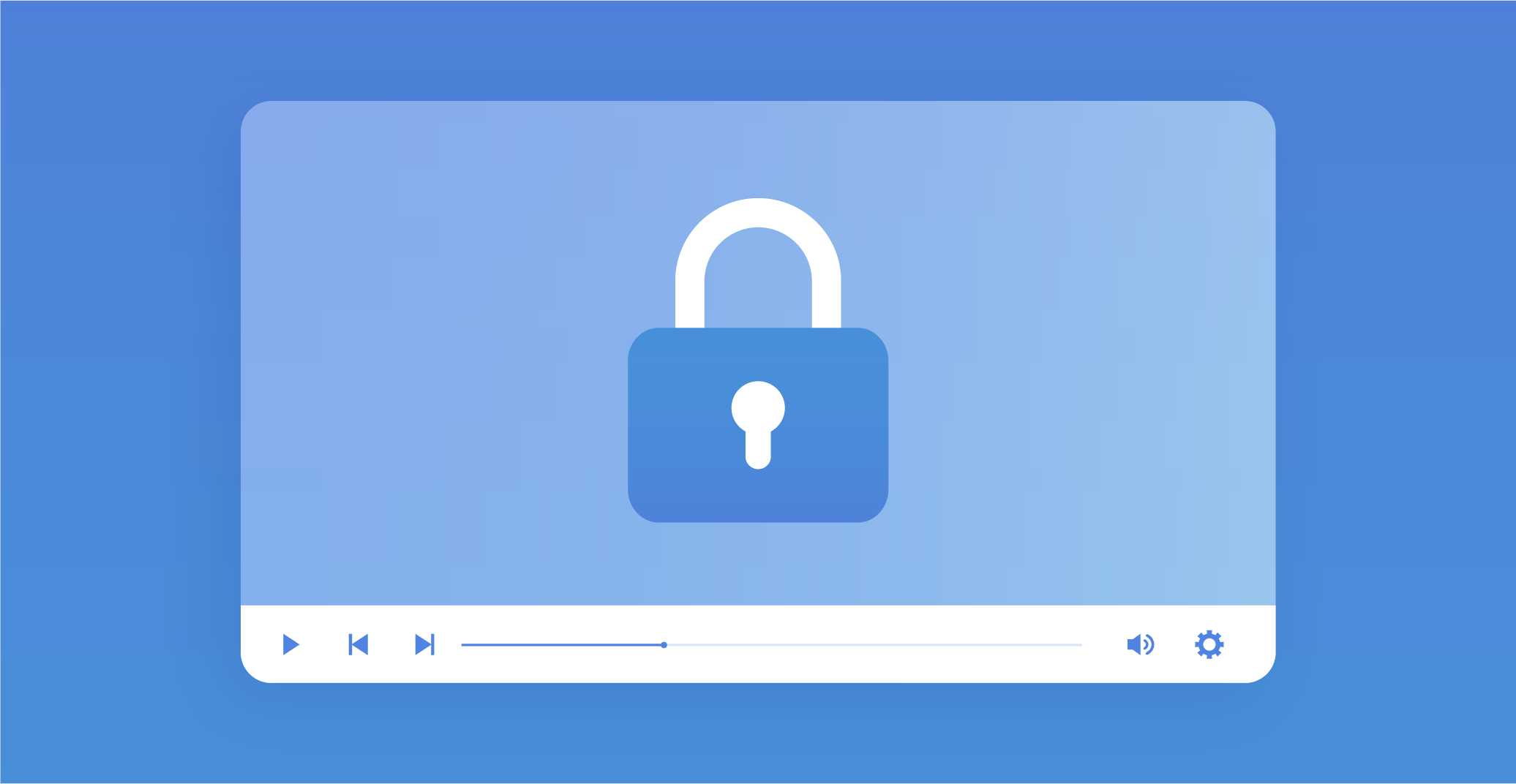
You want others to see your music video if you publish it on the internet. However, if your film is for corporate training, you don't want unauthorised persons to see your sensitive company information. Video encryption can keep unauthorised people from accessing your content.
Data breaches, illegal sharing and data theft are all dangers for modern businesses. To be competitive in today's world, you must rely on content security to keep your company's information safe and secure.
Encrypting your videos is one method of safeguarding your company's data. Once your video footage has been encrypted, you can safely share it with your employees, customers, partners, and prospects.
There are three ways to safeguard your videos from unwanted access: encrypting the video, protecting the video, or doing both.
What is encryption?
While encryption refers to the hiding or modifying of data, protection refers to safeguarding the file using codecs, passwords, container formats, and so on, all so that outsiders cannot access the data contained within.
However, for increased security, you can use both encryption and protection, which is the greatest solution for securing your content. In informal conversation, the term encryption can refer to encryption, protection, encoding, or any combination of the three. As a result, encryption in this context means securing your data in every way possible, which includes encryption as well as protection.
What exactly is video encryption?
The method of making your video secure from prying eyes is known as video encryption. Why should you encrypt your videos? There could be two explanations for this. The first is for personal use, and the second is for Digital Rights Management (DRM)
Personal encryption, as the name implies, is used to protect one's privacy. For example, suppose you make a film and want to share it with your relatives, mates, customers, and so on, but you don't want unwanted people to access it.
Digital Rights Management is similar in concept but more sophisticated. The various degrees of DRM are as follows:
– Software-centric video
– Adaptive streaming
– Qualitative and quantitative video streams for various price points
– Device or media-centric video
– Region-centric video
So, what exactly is the distinction between personal encryption and Digital Rights Management? Others are kept out of personal encryption except for the intended recipient. However, in the case of DRM, it either temporarily or permanently shuts people out, without human intervention and under certain conditions.
For various pricing ranges, qualitative and quantitative video feeds are available. – If you're willing to spend more money, you can obtain 4K, but if you want to save money, you'll have to settle for SD. It has an effect on the quality since it directly affects the resolution (physical data of the video stream). The higher the price, the higher the quality.
Region-centric video
Do you want to target a specific region? Perhaps you don't want the video to be seen in other areas or countries. The reasons for this type of DRM could be because you are legally prohibited from catering to other regions, or you want to influence market dynamics. In such cases, region-specific management is required.
Device or media-centric
This is done to prevent your material from playing on incompatible devices. You generate media that is limited to a specific device, such as iTunes, Kindle, or Apple TV. As such, those who do not adhere to the devices in question are unable to play it.
Software-centric video
To play some videos, you must have proper software support and/or pay a licence fee. Specific NLEs will not play certain codecs if the operating system does not support them or if the licence is not paid for. As a result, codec licensing is yet another method for controlling video consumption.
Adaptive streaming
During adaptive streaming, the video dynamically changes to the resolution and bit rate of the internet speed and/or other circumstances.
How are online videos kept secure?
The video is first encoded using conventional encryption and stored on a secure server. The video is not available for everyone to view. To view/access the movie, you must first log in to the server using a confirmed email address and password.
The video is delivered to the viewer's computer through a secure channel and may be watched using a browser that decrypts the video. The browser prevents unwanted access to other applications to see or record it. The browser also prevents the OS from storing the material on the viewer's PC. The secure connection ends as soon as the viewing is over. The data from the viewer is sent on to the content provider for targeted marketing and statistical study. You may also use this data to track down pilferages and leaks. And, if the video is accidentally downloaded, the encryption ensures that it does not play on the accessible media player.
How exactly does video encryption prevent piracy?
The "pirate" must have sufficient expertise to decrypt the encryption. To obtain a high-quality stream, pirates must pay up. And, of course, if you pay, the server will have the essential information about you.
To obtain an accessible format, the pirate must encode the encrypted stream using the software. The procedure either increases the file size or decreases the quality of the source. As the file size grows, the pirate must pay more money to transfer the data again. To detect correlations, cloud algorithms might use the uploaded material and compare it to the original stream.
Options for video encryption
When it comes to video encryption, there really are two scenarios: video at rest and video in action (streaming).
Video at rest
Here are some possibilities for videos that remain on hard drives or are downloaded to play later:
– AES encryption standard - 128, 192, or 256 bits
– Google Widevine
– Apple Fair Play for iTunes videos
– Marlin
– PMP (Protected Media Path) in Windows
Video in motion or video streaming
Some examples of video in motion or streaming video include:
– RTMFP and RTMP(E)
– HTML5 DRM standard
The Advanced Encryption Standard (AES), which has been approved by the government of the United States and is currently utilised all over the world, is the encryption method that provides the highest level of safety.
How to secure your digital content using video encryption

Running tasks in the background
A new mechanism for handling tasks allows you to run them in the background. For example, you can run an LDAP synchronization task and still work in Passwork. Your synchronization task will run in the background.
You can see scheduled and completed tasks on the “Tasks” page. Here you can also find the configuration instructions for your operating system.
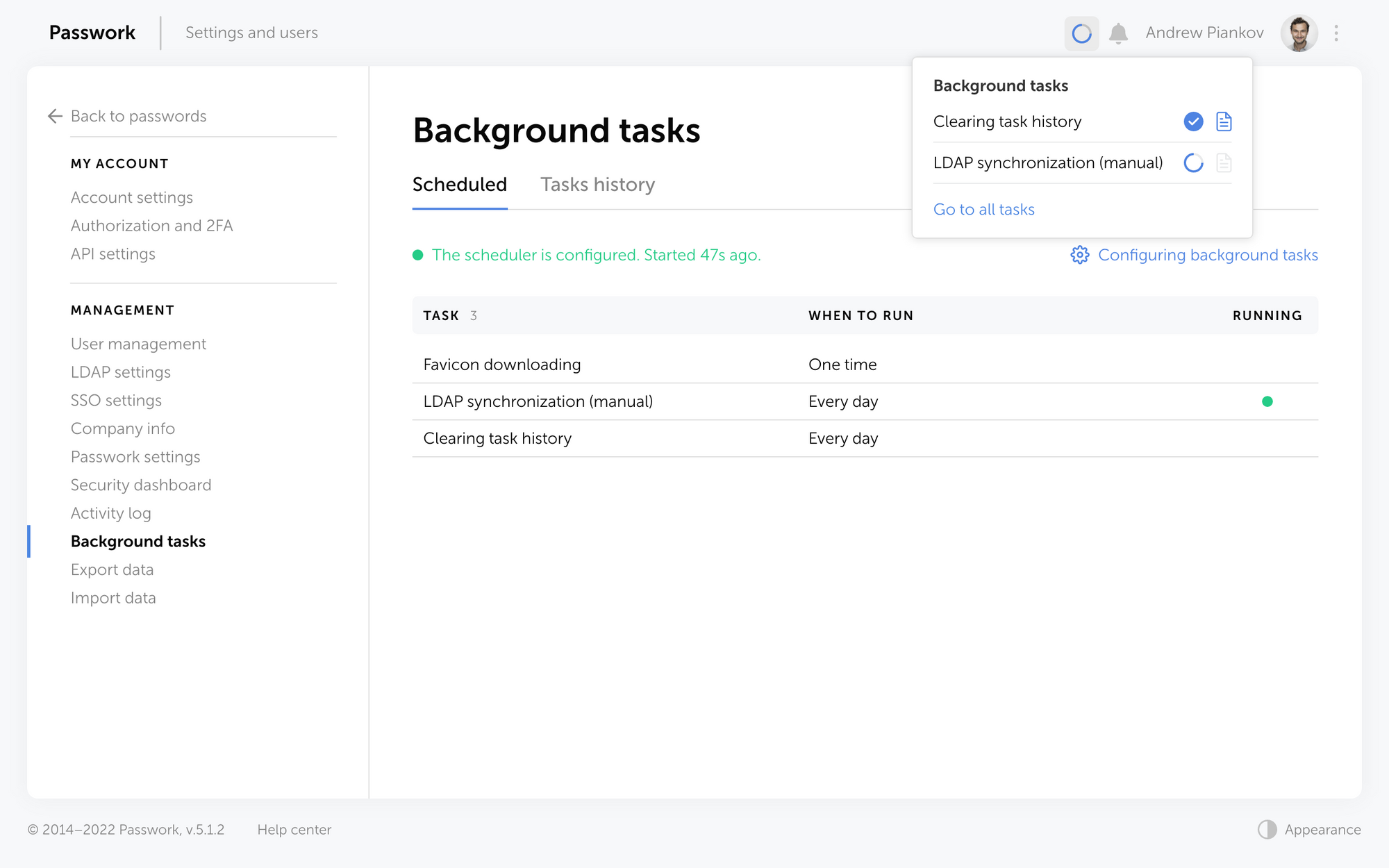
Display a favicon in the password list
The Passwork interface has become even more user friendly and convenient. If a password has a URL, a website icon will be displayed next to its name.
Automatic favicon loading can be set up by administrators on the “Company settings” page. In this case background tasks should be set up.
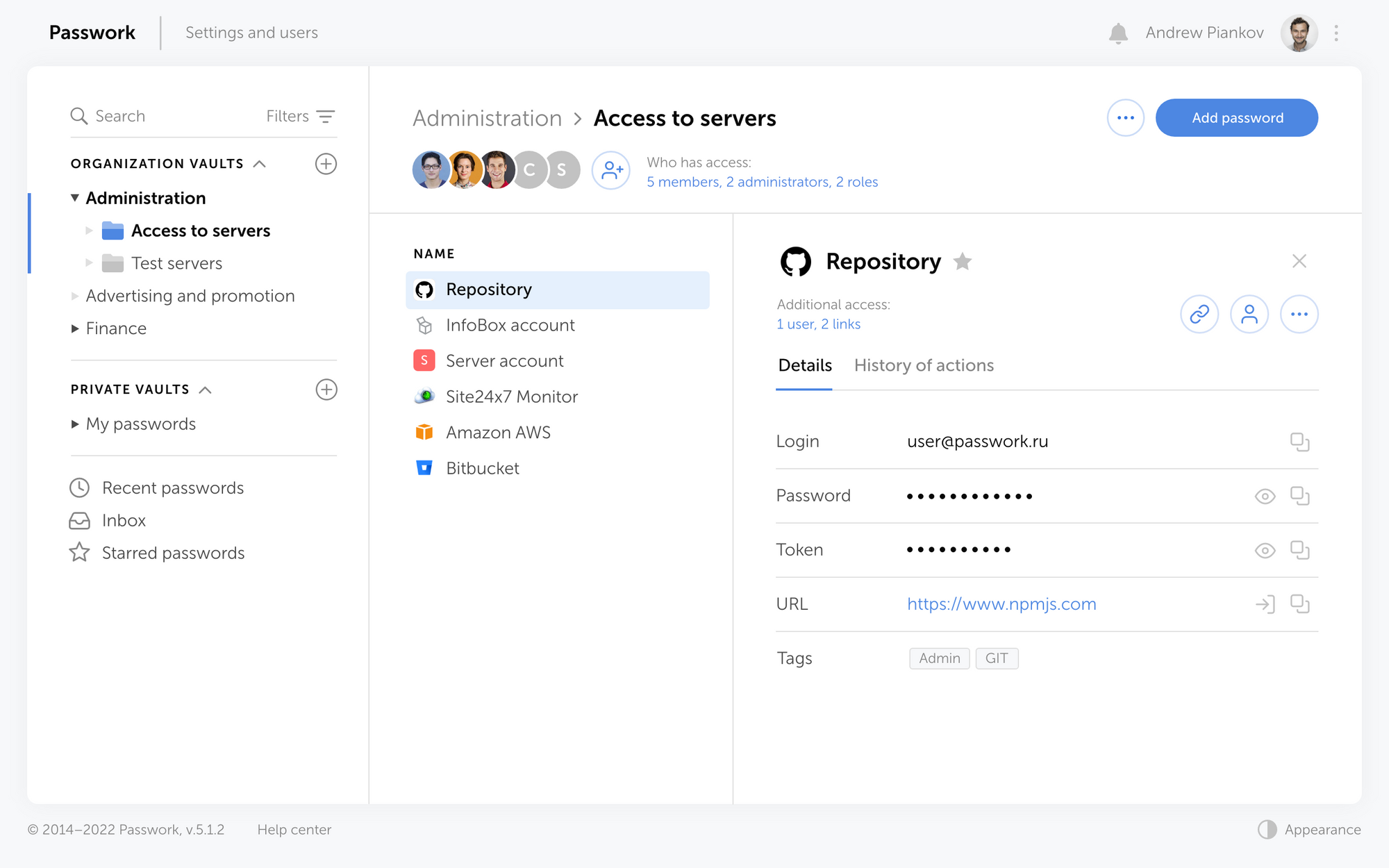
Other changes:
- Automatic session termination in the mobile app and Passwork extension when API key is changed
- Removed white background in the dark theme when loading pages
- Fixed bug displaying the results of an outdated search query
- Improved validation of TOTP keys
- Fixed empty messages in Syslog
- Added login validation with UTF-8 encoding
- Added automatic LDAP host swap :\\ → ://
- Fixed errors in LDAP code related to the migration to PHP 8
- Redesigned login and registration forms
If you are already using Passwork, update your version — How to update Passwork
Or request a free demo at passwork.pro
Introducing Passwork 5.1

Nearly 20 years ago, the National Institute of Standards and Technology (NIST) established guidelines for secure passwords. Indeed, they are still used by many websites, portals, and other services. You’re likely familiar with these password requirements — there ought to be at least 8 characters, both capital and lowercase letters, digits, and special characters. Despite these guidelines, passwords that meet these requirements are no longer safe from modern attackers. The only thing any of us can do to improve the security of our accounts is to make sure that our passwords are lengthy, complicated, and unique for each account. Due to the strict password management requirements, this strategy is, nevertheless, laborious and intimidating for many.
The Same Password Rules Do Not Apply Today
In the modern day, password-based security is no longer seen as sufficient. Our digital world is continuously expanding, thus it is more important than ever to make sure that our data is safeguarded from cybercriminals. Cybercriminals perceive an opportunity to target people in a more sophisticated way as a result of the increasing usage of internet services. One explanation is that, although we benefit from technological improvement for our personal, social, or economic growth, cybercriminals have also benefited from the advantages of improved computer graphics cards and machine learning to enhance their attack strategies. In addition to the problem of more sophisticated cyberattacks, there are two interrelated problems with conventional password rules:
The first concern lies in our human nature — keeping track of passwords is tough
You may take a few steps as an individual to increase the security of your passwords. Start by lengthening and making your passwords more complicated. Second, create a unique password for each website you visit. The difficulty of remembering a password increases with its complexity. As a result, we frequently select passwords that are not entirely suitable yet are simple to remember. The difficulty of managing several complicated passwords for every online account leads to the frequent reuse of the same passwords across multiple platforms. As a result, a successful attacker immediately wins big.
However, the high level of password complexity necessary to maintain online safety should not be blamed; rather, it should be pointed out that we can’t improve our inadequate password management skills. Using a password manager to generate and store secure passwords is a useful solution. It is not humanly possible to manage strong passwords for all of our internet accounts without assistance, such as password managers. Because they can't recall the complicated, random sequences of letters, numbers, and special characters, the problem increases the likelihood that individuals will write down their passwords. Passwords are left exposed in digital files stored on a computer or in desk-top notes, making it simple for hackers to hack and read passwords.
The second problem is that passwords have a mathematical limit
There are only ever a finite amount of potential password combinations since a password is a mix of letters, numbers, and symbols. As a result, the best technique for breaking passwords is brute force attacks. Until the correct combination is identified and the password is broken, brute force attacks attempt all possible combinations of letters, numbers, and symbols. Theoretically, a stronger password would be one that is harder to guess due to its length, complexity, and number of possible permutations. However, attackers are now substantially more frequently exploiting Graphic Processing Units (GPUs) to break passwords. GPUs are a component of a computer's graphics card and were first designed to speed up the loading of images and movies. They now show promise for computing hashes (the method used in brute force attacks).
According to studies on password cracking times, passwords may be cracked much more quickly using sophisticated computer graphics cards. Using the most recent computer graphic cards, an 8-character password that used to take 8 hours to crack in 2018 now only takes 39 minutes (see the conclusive 2022 results in the table below). Passwords are gradually getting simpler to crack as a result of recent technical developments, which is a concerning trend. More crucial, however, is the fact that if a password has already been stolen, repeated across sites, or contains basic phrases, attackers may access your accounts right away, regardless of the complexity of the password or the attacker's graphics card.
Consider a 4-character password made up of all 26 letters in the Latin alphabet (case-insensitive) in order to visualise this mathematical example.
26^4 = 456,976 possible password combinations
The number of viable choices rises to when you include digits, uppercase and lowercase letters, and special characters.
95^4 = 81,450,625 possible password combinations
However, because the password must contain at least one special character, one number, one capital letter, and one lowercase letter, the quantity drops to
5,353,920 possible password combinations.
Nevertheless, assuming there are no password-entry security measures, this can be cracked in less than a second by a computer (such as automatic account blocking).
Increase the length and complexity of passwords
Longer or more complicated password phrases are strongly advised when creating new passwords. In this manner, potential attackers will have a harder time breaking the codes. It's crucial to take into account the popularity of the selected password combination in addition to the amount of alternative password combinations. For instance, lists of frequently used passwords or phrases, such as "qwerty," "password," or "12345," are frequently used in brute force assaults.
Therefore, the password should be completely unique or not contain any words at all. For instance, one technique would be to employ acronyms or mnemonics, such as generating a password out of the first few characters of a long text. As an illustration, consider making the password ‘Ilts@7S!’ out of the words I love to ski at Seven Springs.
Password length and complexity alone are insufficient
We are aware that adding length and complexity to passwords is the only method to increase their strength and, consequently, the safety of our accounts. The time it typically takes an attacker to break a password in 2022 using a powerful commercial computer is displayed below. This chart, which has been analysed and periodically updated since 2018, shows how quickly passwords can be broken on current machines. This pattern indicates that, despite our best efforts to create passwords that are longer and more complicated, passwords alone are no longer sufficient to meet the required internet security standards.
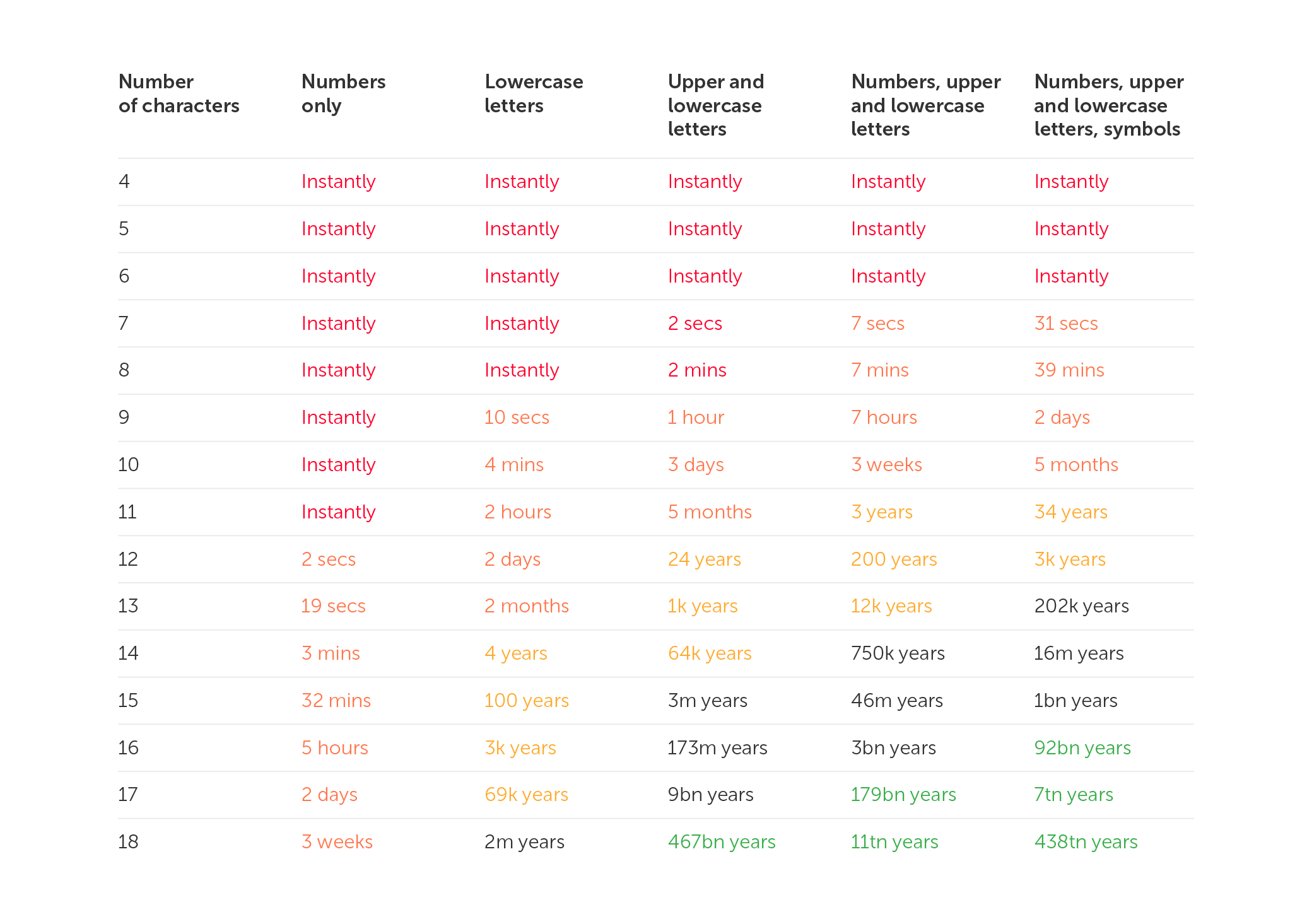
In conclusion, password rules increase the complexity of passwords without necessarily enhancing their security. The answer to that is to use no passwords at all. However, we’ll discuss that in part 2 of this article.
Why your passwords are no longer secure (Part 1)
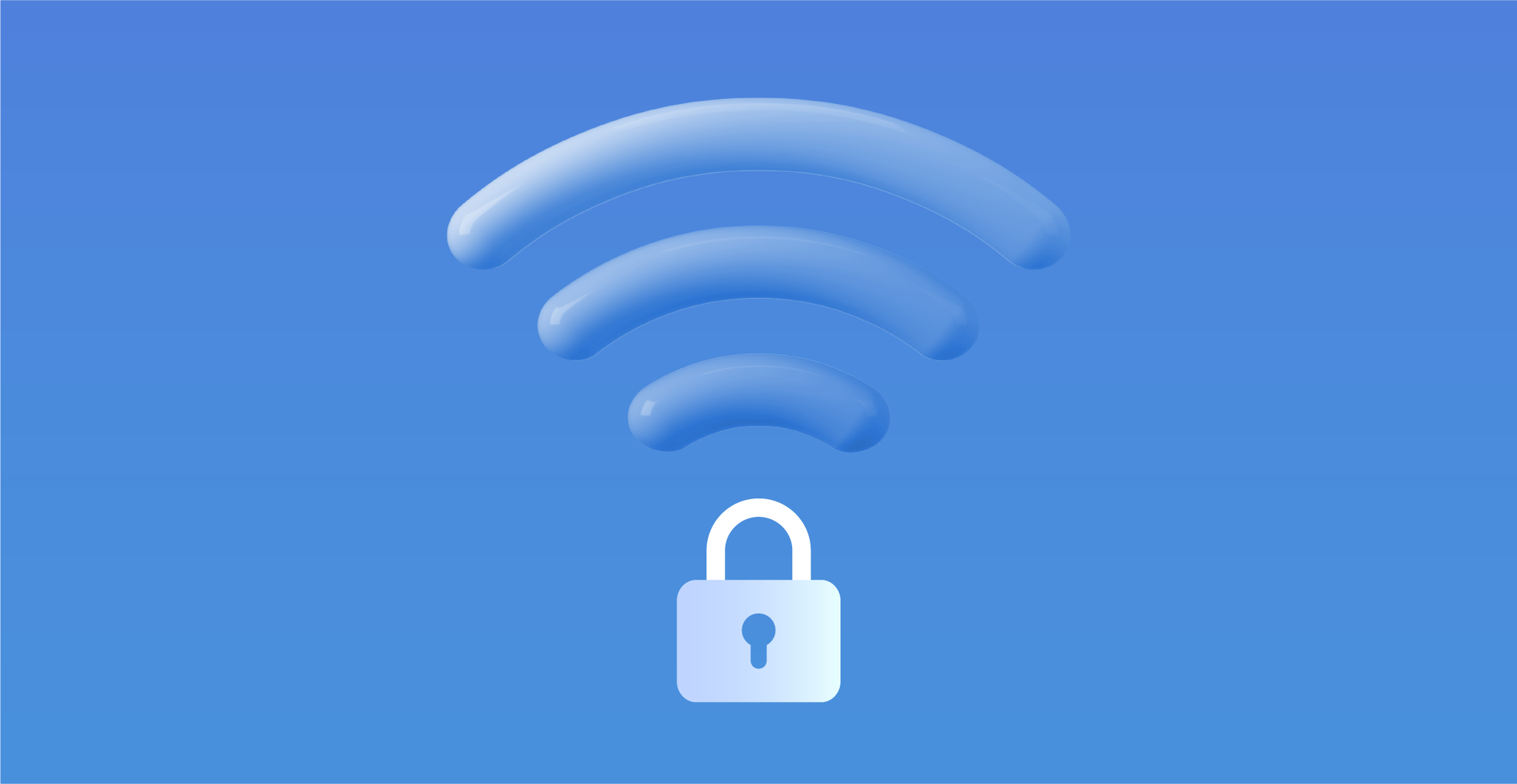
These days, locking your door and protecting your WiFi network are almost the same in terms of their importance. Without any protection, hackers may access your network and your personal information, such as your bank data, via any of your connected devices, including your video doorbell. Modern WiFi routers utilise security protocols and encryption technologies to mask your sensitive data so that you can protect yourself. In order to select the proper security settings for your WiFi network, you must understand the differences between WEP, WPA, WPA2, and WPA3.
WiFi Encryption: What is it?
Nowadays, the majority of WiFi routers encrypt all the data sent by your connected devices, including your computer, smartphone, or smart home appliances. As a result, nobody else will be able to access any of your personal information without the decryption key since it will convert all of your data into "cipher text."
An encryption protocol can be compared to a combination lock. To unlock your data and decode it into plain text, you need the appropriate combination.
The WiFi Alliance, a nonprofit organisation that holds the Wi-Fi trademark, has certified all WiFi protocols. There have been four distinct encryption systems throughout the years: WEP, WPA, WPA2, and most recently, WPA3.
WEP
The WiFi Alliance approved the first wireless security standard, called WEP (Wired Equivalent Privacy), in 1999. The WEP standard was initially intended to offer security that was comparable to that of a wired connection, however several security holes were found over time.
WEP really offers "little to no protection, since WEP can be broken using publicly accessible tools," according to the FBI. The WiFi Alliance formally abolished WEP in 2004 as a result of these security concerns. It’s crucial to remember that utilising WEP is still preferable to employing no security mechanisms at all.
WPA
The WPA (WiFi Protected Access) standard was introduced in 2003 as a stopgap measure to take the place of the WEP standard. WPA employs Temporal Key Integrity Protocol (TKIP) to dynamically produce a different key for each data packet delivered, in contrast to WEP, which uses the same key for each authorised system.
The WiFi Alliance deprecated the WPA protocol in 2015 because it "no longer provides the level of security required to safeguard consumer or corporate WiFi networks" due to a range of uncovered security weaknesses.
WPA-PSK
A streamlined WiFi security protocol called WPA-PSK (Pre-Shared Key) was created for residential networks. Similar to WEP, it employs a static key to make things simpler, but the key automatically changes on a regular basis to stop hackers from breaking into your network.
WPA2
When we compare WPA with WPA2 (WiFi Protected Access Version 2), we can observe a substantial increase in security. WPA2, which was introduced in 2006, is identical to WPA but replaces TKIP with the more powerful Advanced Encryption System (AES).
The US government uses the same encryption standard, AES, to safeguard secret materials. With WPA-AES, relatively few security holes have been found, and the majority of them may be avoided through the use of a strong password.
Since WPA2 certification became required in 2006, any router produced after that year must support WPA2. When you connect an older device, WPA2 routers will still default to WEP, so be careful to turn off WEP on your router to close these security gaps.
WPA3
In 2018, the WiFi Alliance certified WPA3, the newest WiFi security technology. WPA3, the most recent network security protocol, enhances the security characteristics of WPA2 by introducing new ones.
For instance, WPA3 verifies authentication via a "handshake" between your network and any of your wireless devices. A gadget only allows someone to guess the WiFi password once if it is offline. This safeguard makes sure that the user must be able to view your router directly.
Even if WPA3-certified items are becoming more widely available, not everyone will have access to them. If your router is outdated, you may need to replace it or wait in the hope that your manufacturer releases an update that enables WPA3 usage.
What WiFi security protocol is the best?
The WiFi Alliance advises using WPA3 as your wireless security protocol if your router is compatible with it. However, if you have older devices connected to your network since WPA3 is still so new, you might need to utilise WPA2.
- WPA3-Personal: The best security setting for home WiFi networks
- WPA3-Enterprise: The best security setting for businesses
- WPA2 (AES): The second-best security setting, available on more routers
- WPA/WPA2-PSK (TKIP/AES): The best security setting for networks with older devices because it enables you to use both WPA and WPA2, but it is not available on most routers
- WPA2-PSK (TKIP): Still usable, but it only provides you with minimal security
- WPA-PSK (AES): An updated version of WPA that replaces TKIP with AES, but you should only use this setting if there are no better options available
- WPA-PSK (TKIP): No longer considered secure
- WEP 128: Risky
- WEP 64: Highly risky, but better than having no security
- Open network: No security at all
When you get a new WiFi router, the first thing you should do is create a strong, unique password for your WiFi network. The WiFi Alliance recommends that you use a password that is at least 8 characters long and contains letters, numbers, and special characters.
After you create a password, the WiFi Alliance also suggests that you change it at least once a year. You should also change your router’s login credentials, install an antivirus program, and update your router’s firmware.
